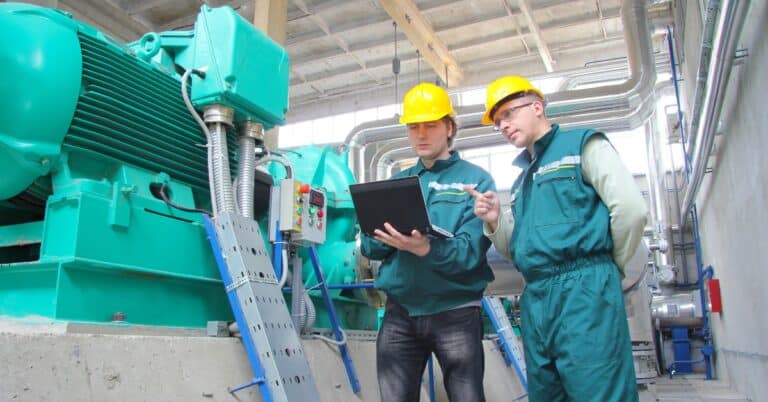Environmental training is a critical aspect of ensuring that individuals, businesses, and organizations understand and appreciate the impact of their actions on the environment. All industrial facilities must abide by strict environmental standards on the disposal of wastes, debris, and other by-products. Every industrial plant must have an effective environmental management program to ensure they meet all the environment-related rules and regulations set by the Environmental Protection Agency (EPA). And at the heart of any effective environmental management program is environmental training. From reducing greenhouse gas emissions to protecting natural resources, environmental training is essential in educating your team on how to minimize their impact on the planet. In this blog post, we will explore what environmental training is, why it is important, and how it can benefit individuals, businesses, and the planet as a whole.
What is Environmental Training?
Environmental training refers to the efforts of your company or organization to provide information and awareness on the environmental impacts of your facility and activities. The scope of environmental training that your facility needs depends on your industry type, facility size, and location.
Training company employees and leaders on applicable environmental rules and regulations is not mandatory. However, environmental training is critical for ensuring that all employees are competent and aware of their environmental responsibility. This competency and awareness of all employees make it easier for any facility to comply with EPA standards and policies.
Why is Environmental Training Important?
The main purpose of environmental training is to provide the knowledge and awareness that prevents non-compliance and violations of existing rules and regulations. Effective environmental training can, therefore, provide the following benefits:
1. Up-to-date Information
Staying compliant is not easy if you are not aware of current standards. This is a common cause of non-compliance as businesses and their employees aren’t knowledgeable of the latest information. Regular environmental training helps your employees and leaders keep up to date with any changes in the applicable standards.
2. Increased Morale
Providing training to employees makes them feel valuable and worthy to be invested with money, time, and other resources. This in turn results in better information retention and increased job performance.
3. Business Investment
Environmental training can be costly, but it saves you from paying non-compliance costs in the future. By investing in training your staff, your company can also benefit from increased productivity, reduced energy and waste, and lesser need to hire new staff to train on new responsibilities.
4. Better Communication
Training is a great way to share ideas, identify strengths and weaknesses, and brainstorm solutions. Regular environmental training improves communication between departments and ultimately increases environmental performance.
5. Shows Social Responsibility
Environmental training shows the company’s commitment to performing its social responsibility of minimizing environmental impact. This reflects a good light on the company as a brand and can be an advantage over competitors in the market.
Types of Environmental Training
The following are the common types of environmental training that a company may complete for compliance with EPA environmental guidelines.
1. Waste Training
There are several training topics on different waste types, such as hazardous wastes, universal wastes, and food manufacturing wastes. A typical waste training should include the identification of wastes in your facility, management and handling, and emergency procedures.
2. Oil Control
This training applies to industries that work with or handle oil and other lubricants. Environmental training on oil control may include the prevention of oil spills from storage or containment tanks, discharges from machines, oil pollution control, used oil disposal, etc.
3. Emergency Planning & Preparedness
Unplanned events in industrial facilities can result in irreversible environmental damage. It is the company’s responsibility to form a plan to deal with emergencies with consideration of the environmental effects of these emergencies.
4. Water Pollution Training
Environmental training should also include the minimization of the impact of water pollution and the handling of wastewater or effluents. Furthermore, environmental training on water pollution can consist of identifying toxic contaminants or chemicals on water discharges, treatment procedures, handling, and related permits and testing for water pollution.
Environmental Training Tips
Below are a couple of important recommendations for effective environmental training.
Scheduling
Effective and successful environmental training starts with scheduling. Keep in mind that the participants in environmental training can be the busiest people in the company. Therefore, proper scheduling ensures that the technicians, managers, supervisors, and related personnel can give their complete attention and time to the training. For this, you may need to do the following:
- Schedule the training during a slow period in the operations.
- Provide a competent substitute for the training participant.
- Schedule several batches of training sessions for separate groups.
Training Reinforcement
Environmental training should not end in the training room. Incorporating the training knowledge into your everyday work process is essential in getting the best results and reaching your bottom line. To do this, you must integrate your environmental training into your standard operations. For example, environmental waste management steps need to be reflected in your Standard Operating Procedures (SOPs).

Get the Most Out of Your Environmental Training
Environmental training is critical for compliance with environmental rules and regulations. But scheduling and sustaining the initial results of any environmental training can be challenging.
Tools like Redlist’s Health Safety and Environmental Software can help you gain valuable insights into your environmental training program and empower your team to play their role. Additionally, the best practices from the training can be easily integrated into your Lubrication Management or CMMS (Computerized Maintenance Management System) Software. This allows you to use digital forms and real-time data, making scheduling and following up on compliance more manageable. In addition, this software helps save time by completing regulatory forms, providing automated data gathering, and offering accurate visual reporting.With Redlist, you can reduce non-compliance with local and federal guidelines by ensuring that all procedures are followed. Then, you can have peace of mind that your company, workforce, and the environment are protected. Contact us to request a demo today!



